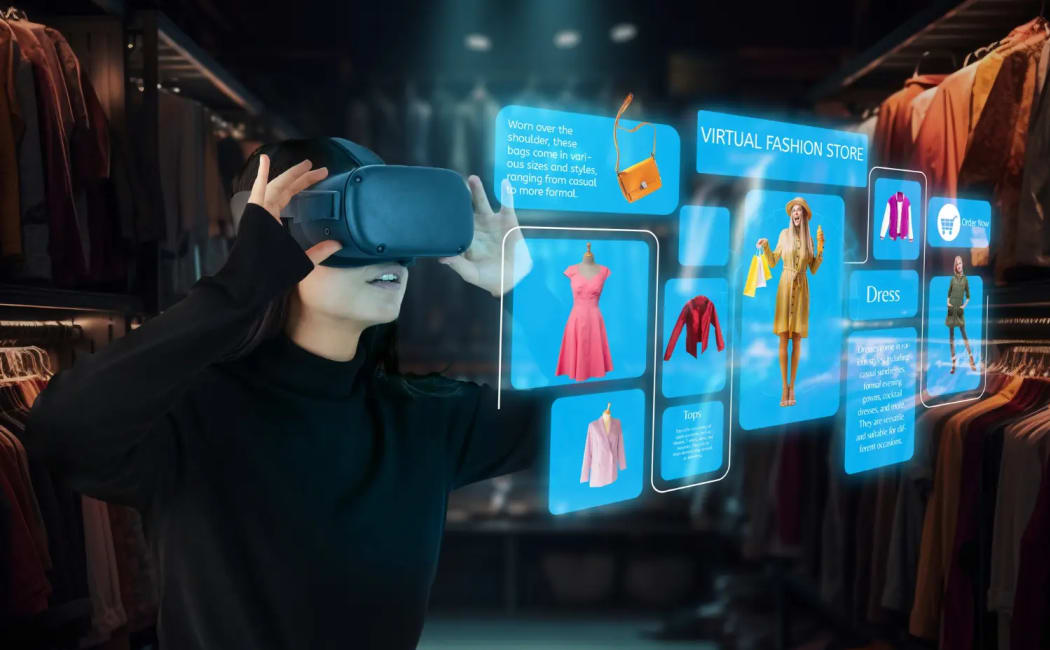Introduction to XR: How AR/VR Are Changing Shopping & Education

What Is XR & Why It’s Taking Over
Extended Reality (XR) refers to technologies that blend the physical and digital: **Augmented Reality (AR)** overlays digital content onto the real world, while **Virtual Reality (VR)** immerses the user in a fully digital environment. Together, they are transforming how we **shop online**, how students learn, and how brands connect with consumers. With powerful trends like immersive learning, interactive shopping, and XR-powered personalization, XR is now more than a futuristic idea — it’s a practical tool reshaping daily life in retail and education.
How AR & VR Are Redefining Shopping
Online retail used to be flat images and text. Now, with AR/VR, shoppers can virtually try on clothes, test how furniture looks in their living room, or explore a virtual storefront — all before they click “buy.” These **virtual try-ons** reduce uncertainty, cut return rates, and boost customer confidence. :contentReference[oaicite:0]{index=0}
Brands are also creating immersive experiences: think of VR brand stories, 3D product previews, and AR filters that let you customize products in real time. These **immersive shopping experiences** engage customers much more deeply than static photos, and help retail platforms stand out in a crowded market. :contentReference[oaicite:1]{index=1}
XR in Education: More Than Just Virtual Classrooms
In education, AR/VR are powering a shift from passive learning (lectures, textbooks) to immersive, hands-on experiences. Students can explore virtual labs, conduct simulated experiments, or visit historical sites through VR field trips. AR overlays can bring diagrams to life, letting learners manipulate 3D models for better understanding. This is called **immersive learning** — it improves engagement, retention, and builds practical skills. :contentReference[oaicite:2]{index=2}
Plus, with XR in education, personalization becomes possible. AI-enhanced AR tools adapt content to each student’s pace; VR environments allow repeat practice without resource constraints. Schools and edtech startups are embracing **adaptive learning**, cloud-streamed XR content, and virtual classroom models that are accessible from anywhere. :contentReference[oaicite:3]{index=3}
Key XR Trends in Shopping & Learning for 2025
- Hyper-personalized shopping journeys — AI + AR/VR predicting preferences, offering suggestions, dynamic content. :contentReference[oaicite:4]{index=4}
- Voice & Conversational Interfaces — Using voice commands, AR assistants to navigate or make shopping more natural. :contentReference[oaicite:5]{index=5}
- Metaverse commerce (vCommerce) — Virtual stores, social shopping, 3D storefronts become mainstream. :contentReference[oaicite:6]{index=6}
- Cloud-based XR & 5G — Faster streaming of AR/VR content, reducing hardware costs, making it more accessible. :contentReference[oaicite:7]{index=7}
- Gamification & Engagement Tools — Using rewards, interactive quizzes, virtual tours to increase participation in learning & shopping. :contentReference[oaicite:8]{index=8}
- Sustainability & Ethical XR — Virtual try-ons reduce waste, digital textbooks reduce physical resources. Ethical use of AR/VR and privacy concerns are rising. :contentReference[oaicite:9]{index=9}
Real-World Impacts & Market Growth
The numbers tell the story: the global AR/VR in education market was valued at **~USD 4.72 billion in 2024**, and it’s projected to reach **USD 28.05 billion by 2032**, growing at ~25% CAGR. This reflects how governments, institutions, and edtech firms are investing heavily in immersive learning and **digital education tools**. :contentReference[oaicite:10]{index=10}
In retail and e-commerce, AR shopping experiences are driving higher conversion rates and reducing return rates. Brands using AR try-before-you-buy tools show customers feel more confident, and customers who engage with AR/VR content often spend longer on apps/websites and return more often. :contentReference[oaicite:11]{index=11}
Challenges & What Needs Fixing
Even though XR is exciting, there are real obstacles to widespread adoption. Hardware costs for VR headsets or high-quality AR glasses remain a barrier for many consumers and schools. Connectivity issues (latency, bandwidth) can ruin the immersive experience. Plus, there are concerns around privacy, safety, motion sickness, and ensuring content is inclusive. For education especially, teacher training and pedagogical design are often lagging behind the technology.
How to Get Started with XR in Your Business or School
- Start with clear goals — do you want to boost engagement, reduce product returns, or improve learning outcomes?
- Pilot projects — try AR virtual try-on or VR field trip in a class, measure feedback and results before scaling.
- Choose affordable tools — mobile AR apps, cloud-streamed VR, affordable headsets.
- Train users & educators — ensure both students and teachers are comfortable; similarly, retail staff must learn how to integrate AR/VR into customer service.
- Measure metrics — track engagement time, return rates (in shopping), test scores/improvement (in education), adoption rates.
- Ensure ethical & inclusive design — minimize bias, ensure accessibility, protect user data, design for diverse learners & consumers.
Conclusion
Extended Reality (XR), combining Augmented Reality and Virtual Reality, is not just a tech trend — it’s rapidly becoming core to how we shop, how we learn, and how brands and educational institutions deliver value. From immersive shopping journeys to virtual classrooms and adaptive learning, AR/VR offer stronger engagement, personalization, and real impact. While cost, accessibility, and training remain challenges, businesses and schools that invest wisely in XR are unlocking new opportunities and staying ahead in the digital age.
